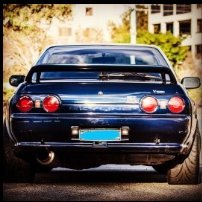Announcements
-
Similar Content
-
Latest Posts
-
By TurboTapin · Posted
I'll bite. I no longer own any euro's, but I thought I'd share two of my favorites I owned. My 500hp B5 S4 and my 800HP E55 AMG. Yes I did attempt to drive the E55 in Canadian winters, that lasted all of a month as it was a death trap. -
By funkymonkey · Posted
To be fair this is the wife’s car. However, I have been accused of owning more cars than I have pairs of undies. Luckily I change my undies more frequently than the cars. -
Cheers Lads Looking at changing up a few things maybe go 2.8lt, bigger injectors with more a modern Turbo. Possibly transbrake and convert to E85 with Haltech ECU. Any thoughts on those Mods changes or better ideas? Want to try keep the car Street/Strip While also being weekend drivable still.
-
The time has come, once again, for us to celebrate all things GTR! Motive DVD's GT-R FESTIVAL for 2024 is fast approaching, and we couldn't be more excited to be part of this awesome event once again! As usual, SAU NSW will be be part of the event, with our traditional club display on the day! If you would like to be part of it, firstly, you'll need to make sure you secure your Display Entry into the show via the below link by Motive Video: https://gtrfestival.com.au/ Other tickets are also available, ie. VIP Entry or Drag Entry, for you to also choose from. Once you have your ticket locked in, make sure to send us a PM via Facebook so we can add you to our list of display cars! When you message us, we will gather some more details from you to make sure we can spot you on the day, and guide you to the right place! If you'd like more information regarding the day, please refer to Motive Video's event page, or, you can get in touch with us and we will help you as best as we can. As always, general details are below: Date: Friday 24th May / Saturday 25th May Location: Sydney Dragway Time: 6.00pm Friday / 9.00am Saturday We look forward to seeing you all on the day! One of the things that really sets our club apart is our commitment to being true enthusiasts. When on normal roads we strive to maintain good relations with the authorities as well as the public in general. When attending one of Skylines Australia NSW events please try to: • Be aware of surrounding environment and act accordingly. • Drive courteously on the state’s roads as a true enthusiast should. • Understand how important it is to maintain the good name of SAUNSW and thus, treat others accordingly. • Any misbehaviour will not be tolerated and you will be asked to leave. Thanks guys and hope to see you there!









Recommended Posts
Create an account or sign in to comment
You need to be a member in order to leave a comment
Create an account
Sign up for a new account in our community. It's easy!
Register a new accountSign in
Already have an account? Sign in here.
Sign In Now